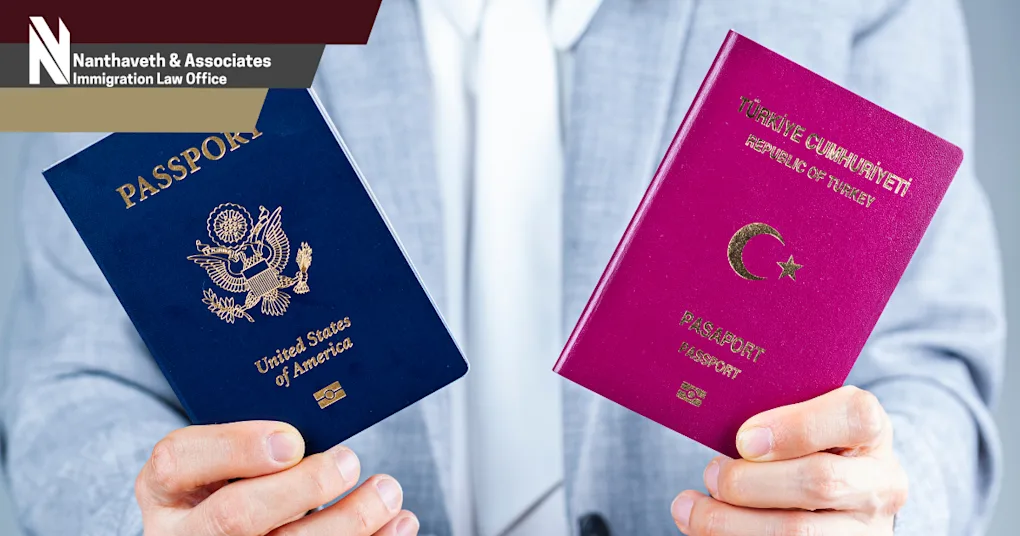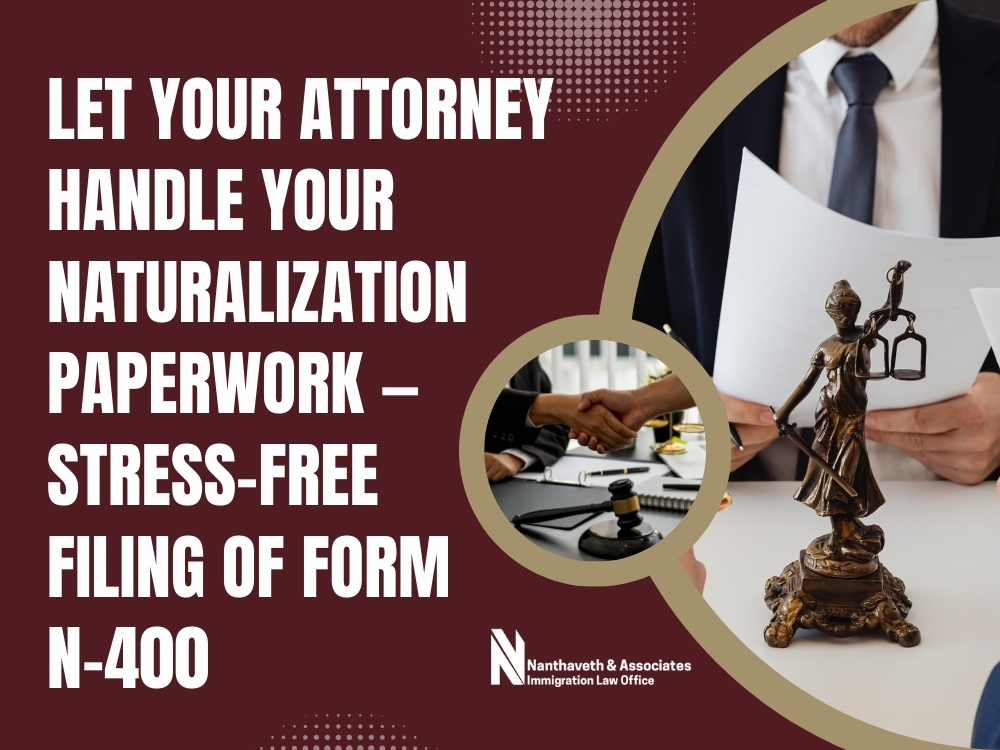Dual Citizenship

If you’re like many people, you’ve heard of dual citizenship – the act of being a citizen of two countries. The United States allows its citizens to maintain citizenship in another country, which entitles people who have dual citizenship to all the benefits (and requires them to meet the same responsibilities) that both countries require.
So how do you get dual citizenship in the U.S.? This guide explains.
How to Get Dual Citizenship in the United States
The United States doesn’t require a person to choose one nationality over another. U.S. citizens are permitted to naturalize in a foreign state without risking their U.S. citizenship. (And, if you choose, you may relinquish your U.S. citizenship with no penalty. However, renouncing your U.S. citizenship is permanent. You would have to naturalize as a U.S. citizen if you wanted your citizenship back.)
Dual nationals – people who have dual citizenship – owe their allegiance to both the U.S. and their other country. They’re also required to obey the laws of both countries, and to use a U.S. passport to enter and leave the United States (even if they have a passport from another country).

Note: Not all countries permit dual citizenship, though the United States does. That means the other country may require you to give up your citizenship. For example, China and India both require you to give up citizenship in those countries upon receiving citizenship in another country; if that’s the case with your home country, you will not be a dual citizen. You’ll only be a citizen of the United States.
You don’t have to follow any special procedures if you want to hold on to your original citizenship from another country as you become a United States citizen. You simply follow the same path every other naturalized citizen takes.
Becoming a Naturalized U.S. Citizen With Dual Citizenship
Becoming a naturalized U.S. citizen who holds dual citizenship is a fairly straightforward process. You must petition the U.S. government after establishing lawful permanent residency in the U.S., which usually only takes place after you’re in the country on a valid visa. You must meet all eligibility requirements, which include being able to read, write and speak basic English and having been present in the U.S. for a certain period of time.
If you meet all eligibility requirements, you can become a naturalized citizen by following these steps:
- Have your Austin immigration attorney submit Form N-400 on your behalf
- Attend a biometrics appointment with U.S. Citizenship and Immigration Services
- Complete your citizenship interview and the citizenship test
- Wait for your decision from USCIS
- Take your Oath of Allegiance to the United States
Here’s a closer look at each.
Form N-400 for U.S. Citizenship
Your attorney can fill out and file Form N-400 for you. This form is the official application for naturalization. You’ll also need to give your attorney documentation that supports your petition, such as a copy of your U.S. green card, your marriage certificate (if you’re married) and two passport-style photographs. You may also need other types of documentation, but your attorney will let you know what to provide so you don’t have to guess.
Attending Your Biometrics Appointment
You’ll most likely have to show up at a USCIS office for a biometrics appointment. At your biometrics appointment, a USCIS official will take your fingerprints, collect your signature and may ask you for photographs.

Usually, these appointments only take about 30 minutes to complete (not counting the time you wait for your appointment in the waiting area). This is an essential part of the citizenship process; the U.S. government needs to collect this data on you in order to process your citizenship petition.
You don’t have to study for anything for your biometrics appointment. You simply need to show up in the right place at the right time. You’ll receive a notice in the mail from USCIS that gives you instructions on where to be and when.
Completing Your Citizenship Interview and Passing the U.S. Citizenship Test
Nearly everyone who attains U.S. citizenship has to go through a citizenship interview. Like the biometrics appointment, you’ll receive a notice from USCIS on when and where to appear. But unlike the biometrics appointment, you should prepare for the interview.
Your interview will be conducted by a USCIS official who’s “checking up” on the information you provided in your naturalization application. The official in charge of your interview may ask you questions about the information you already included, or they may ask you to provide new information. If you’re applying for citizenship based on your marriage to a U.S. citizen, the official may also ask you several questions about your marital relationship to ensure that you aren’t engaged in a fraudulent marriage (one that only exists so that you could obtain an immigration benefit).
You’ll also take your citizenship test during this interview. Part of the test is your ability to speak in English, which your interviewer will evaluate the whole time. You’ll also be asked to read and write in English. Finally, your interviewer will ask you up to ten questions from this list. You must answer at least six of the ten questions correctly; otherwise, you fail the citizenship test.
Waiting for Your Decision From USCIS
Sometimes a USCIS official makes a decision on the same day of the immigration interview. However, in some cases – especially if USCIS needs more information – it may take longer.
Taking Your Oath of Allegiance to the United States
If your petition is approved and you can become a U.S. citizen, you’ll have to swear an oath of allegiance to the United States. Generally, this takes place as a ceremony with other people present. When you swear your oath of allegiance, you’ll receive a certificate and be an official U.S. citizen.
Countries That Permit Dual Citizenship
As of this writing, the countries that permit dual citizenship are outlined in the table below. There are some countries that allow dual citizenship with limitations, so if your country isn’t on this list, it’s a good idea to consult with an Austin immigration attorney for advice.
| Armenia | Australia | Barbados | Belgium |
| Bangladesh | Canada | Czech Republic | Cyprus |
| Denmark | Egypt | France | Finland |
| Germany | Greece | Hungary | Iceland |
| Iraq | Israel | Italy | Kenya |
| Lebanon | Malta | Mexico | Pakistan |
| Philippines | Poland | Portugal | Serbia |
| Sierra Leone | Slovenia | South Africa | South Korea |
| Spain | Sri Lanka | Sweden | Switzerland |
| Syria | Thailand | Tonga | Turkey |
| United Kingdom | United States |
Countries Where Dual Citizenship is Not Allowed
Many countries don’t allow dual citizenship. Those countries (as of this writing) are outlined in the following table.
| Andorra | Austria | Azerbaijan | Burma |
| Bahrain | Botswana | Brunei | Chile |
| China | Ecuador | Estonia | Fiji |
| India | Indonesia | Iran | Japan |
| Kazakhstan | Kiribati | Kuwait | Latvia |
| Lithuania | Malaysia | Mauritius | Myanmar |
| Nepal | Netherlands | North Korea | Norway |
| Papua New Guinea | Peru | Romania | Singapore |
| Solomon Islands | United Arab Emirates | Venezuela | Zimbabwe |
Frequently Asked Questions
What is a green card, and who can get one?
A green card is a card issued by U.S. Citizenship and Immigration Services, or USCIS, that proves a person is a lawful permanent resident of the United States. A green card authorizes the person named on it to live and work anywhere in the U.S. Only people who are eligible for admission into the United States and have followed the appropriate channels can apply for lawful permanent residency.
What is USCIS?
USCIS is short for U.S. Citizenship and Immigration Services, which is part of the U.S. Department of Homeland Security. It’s the government agency that oversees immigration into the United States. It approves and denies green cards, work permits, travel permits and naturalization, as well as some other types of immigration benefits.
Are most green card applications approved?
Most green card applications are approved, but as many as 18 percent of them have been denied in recent years. If you receive an unfavorable immigration decision, such as the denial of a green card, you may be able to appeal your case or file a motion to have it reopened or reconsidered.
What is a lawful permanent resident, or LPR?
A lawful permanent resident is a person who legally resides in the United States without citizenship. LPRs are foreign nationals who are authorized to work or live anywhere in the U.S. or its territories, and who can sponsor some relatives to bring them to the United States. Lawful permanent residents can eventually apply for U.S. citizenship if they wish, but they do not have to do so.
What is a visa?
A visa is an authorization from the United States government that allows a person to enter the U.S. legally. Visas are only valid for a specific amount of time, and every visa’s expiration timeframe is different. You can get an immigrant visa, which means you intend to immigrate to the U.S., or a nonimmigrant visa that indicates you’re only staying temporarily.
What is the Visa Bulletin?
The Visa Bulletin is a document issued by the U.S. Department of State each month. It shows which green card applications can begin to move forward based on when they were originally filed. Only a certain number of green card applications can be issued in certain categories every year, which makes the Visa Bulletin necessary.
What are biometrics when it comes to immigration?
Biometrics are measurements of your identifying features. During a biometric screening for immigration purposes, a government official captures your fingerprints, takes your photo and gets a copy of your signature.
Will I have to attend an immigration interview?
Many people must attend an immigration interview to obtain a visa or green card. If you do have to attend an interview, your attorney will let you know. You should receive a notice in the mail that advises you on where to go and when to show up for your interview.
What is the citizenship test?
In order to become a naturalized citizen of the United States, you must take and pass the citizenship test. The official administering the test will ask you 20 of 128 possible civics-related questions, and you must answer at least 12 of them correctly. You will also be evaluated on your ability to speak, read and write in English. If you don’t pass the test, you can be retested on the portion of the test you failed (English or civics) between 60 and 90 days from your initial interview.
What is the Public Charge Rule?
The Public Charge Rule is a ruling from the U.S. Department of Homeland Security that requires immigrants to be unlikely to become dependent on social services and public programs (such as financial aid from the government).
Do You Need to Talk to an Austin Immigration Attorney About Dual Citizenship?
If you’re considering dual citizenship, you may benefit from talking to an Austin immigration attorney. You can call our office right now to schedule your consultation – we’ll be happy to answer your questions and help you begin moving forward.


11211 Taylor Draper Lane Suite 107
Austin, TX 78759
Tel: (512) 828-3791
Hours: 8:00 AM - 6:00 PM
Payment: all major credit cards, cash, check, money orders, cashiers check
Directions To Our Office
Areas Of Service
Copyright © 2025 | Nanthaveth & Associates | Immigration Law Firm Marketing Specialist MarketCrest
Not all consultations are free, and they are not all conducted by Vi Nanthaveth.
